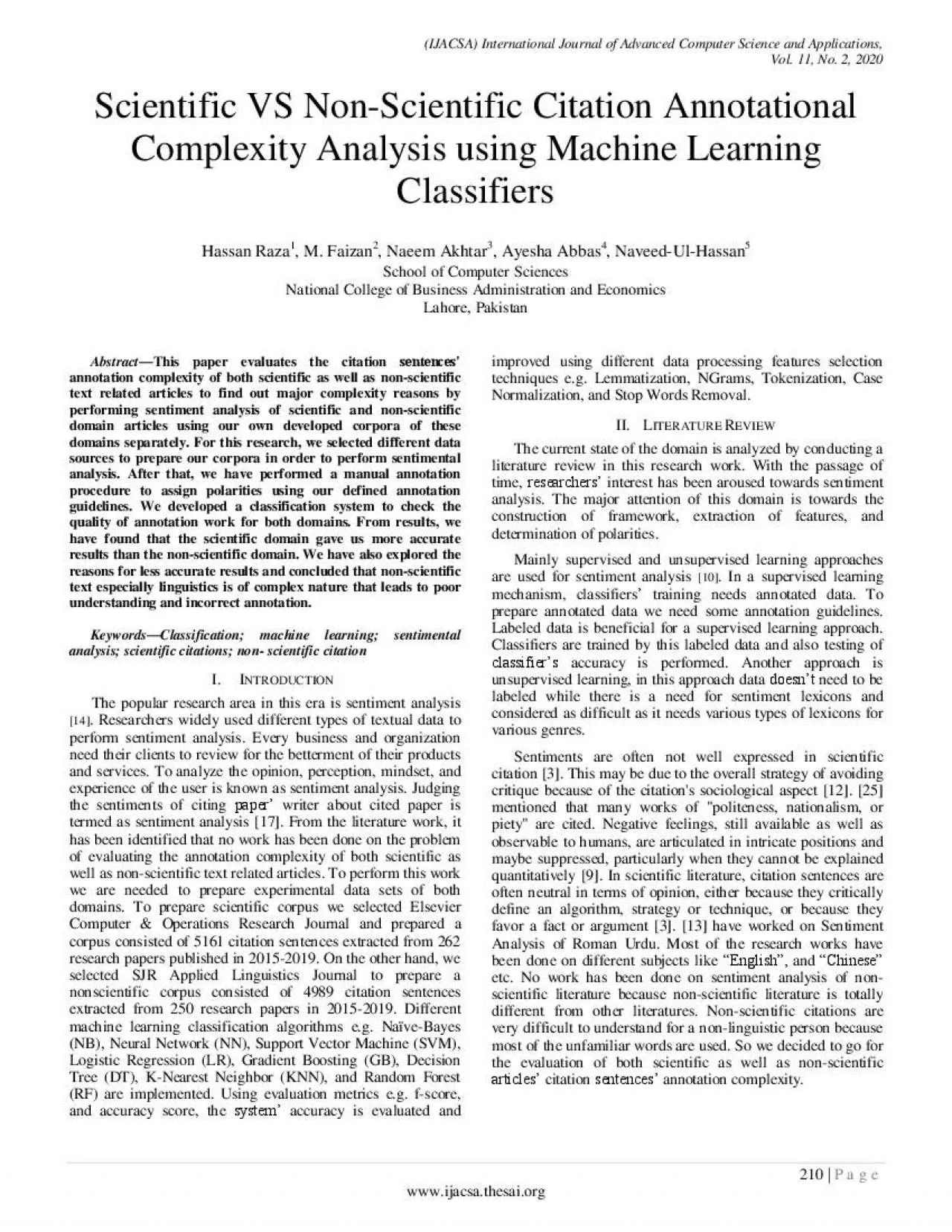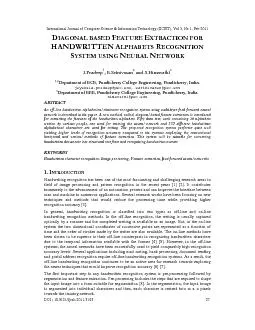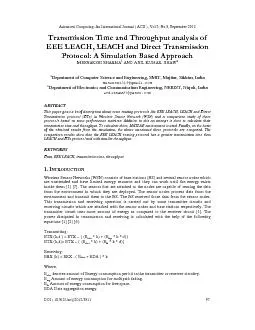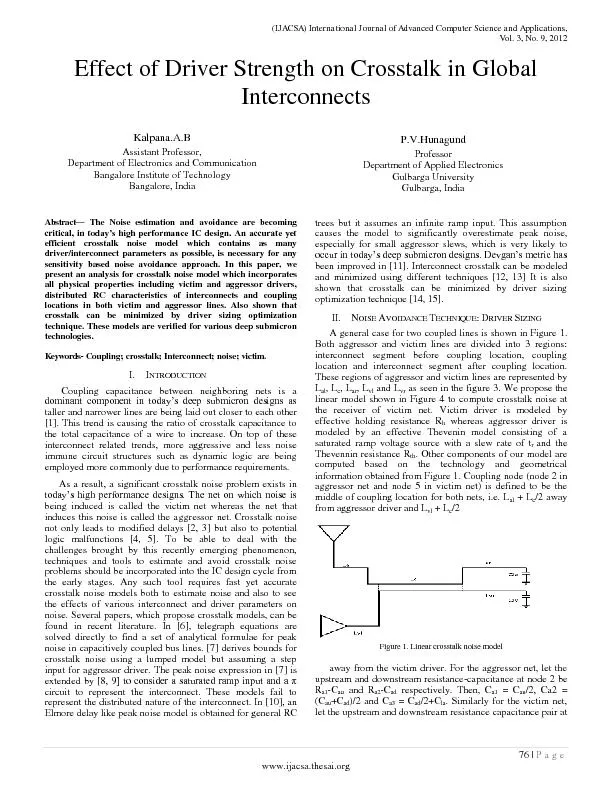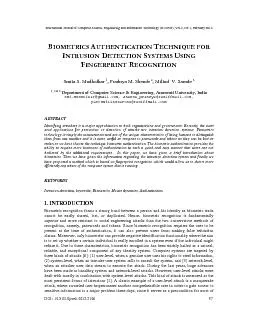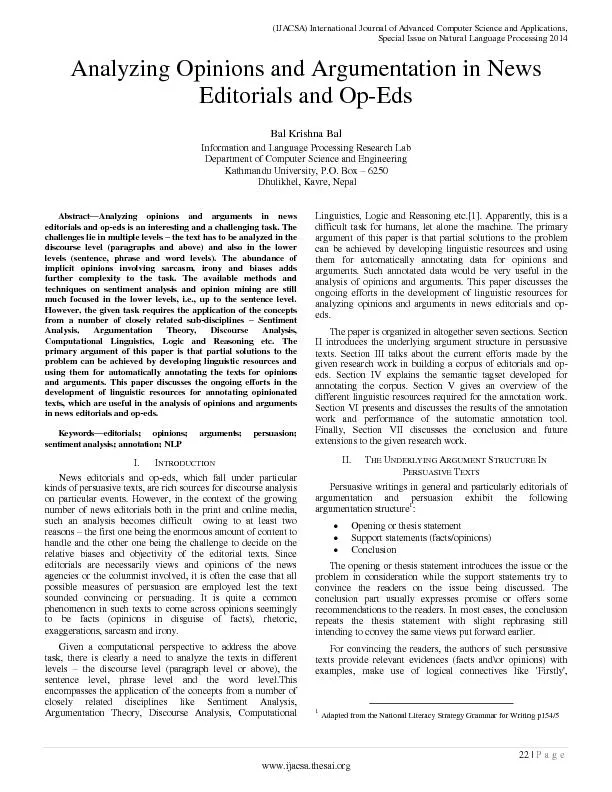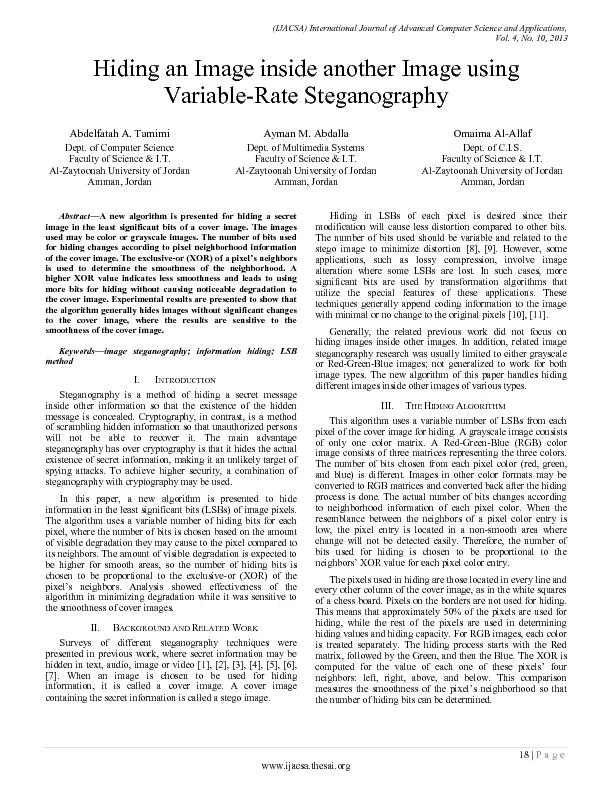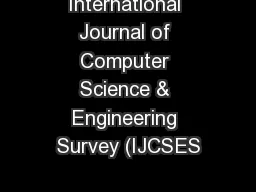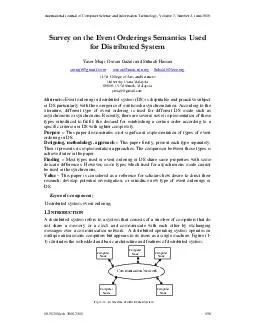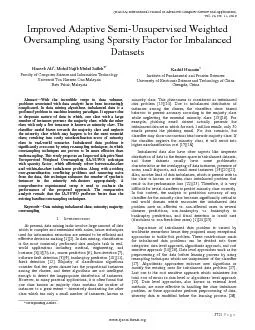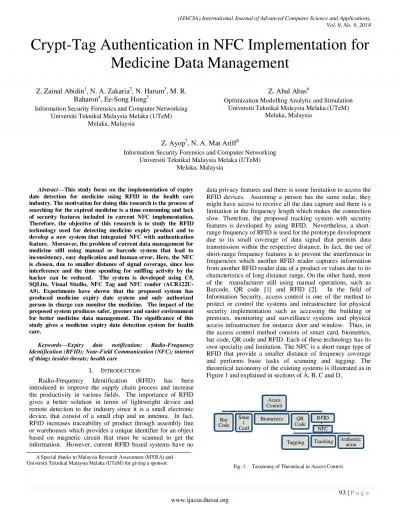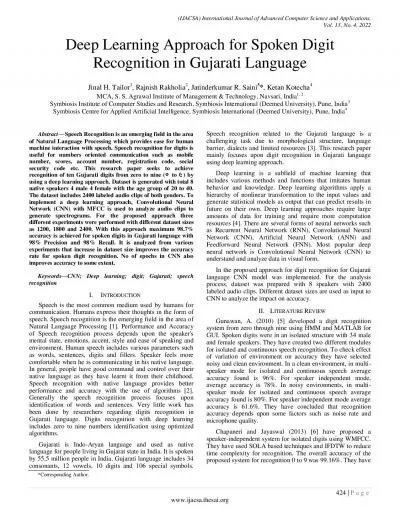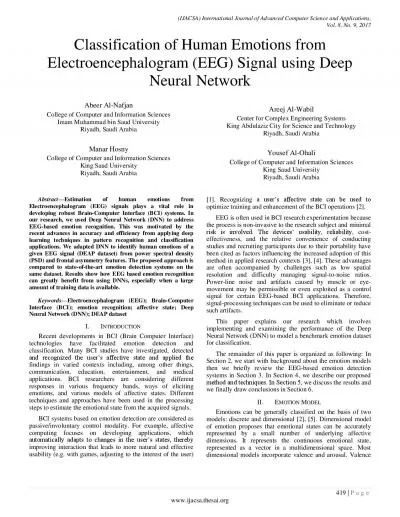PDF-IJACSA International Journal of Advanced Computer Science and Applicat
Author : rose | Published Date : 2021-10-08
Vol 11 No2 2020210PagewwwijacsathesaiorgScientificVSNonScientificCitationAnnotationalComplexityAnalysisusingMachineLearningClassifiersHassanRaza1MFaizan2NaeemAkhtar3AyeshaAbbas4NaveedUlHassan5Schoo
Presentation Embed Code
Download Presentation
Download Presentation The PPT/PDF document "IJACSA International Journal of Advanced..." is the property of its rightful owner. Permission is granted to download and print the materials on this website for personal, non-commercial use only, and to display it on your personal computer provided you do not modify the materials and that you retain all copyright notices contained in the materials. By downloading content from our website, you accept the terms of this agreement.
IJACSA International Journal of Advanced Computer Science and Applicat: Transcript
Download Rules Of Document
"IJACSA International Journal of Advanced Computer Science and Applicat"The content belongs to its owner. You may download and print it for personal use, without modification, and keep all copyright notices. By downloading, you agree to these terms.
Related Documents

